
Injeongjeon Hall
I went to Changdeokgung last Saturday. I was suppose to meet my friend Siobhain in Iteawon for Indian food and shopping at Dongdaemun, but she was running late and after waiting half an hour, I gave up and left. Ah, the joys of trying to make plans without a cell phone. After some brief pouting and planning to just go home and eat worms because clearly nobody liked me, I snapped out of it and decided to spend the day in Seoul, or at least grab lunch before I headed home. I went to Quizno's (which - I know, I know - but it was right next to the subway stop and I wanted someplace cheep where I wouldn't feel weird sitting alone, which meant fast food), pulled out my Korea guidebook and flipped through it in search of some of the places I didn't have a chance to visit last summer.
I decided on Changdeokgung. It's one of the five Grand Palaces of Seoul, and was finished in 1412 by King Taejon of the Joseon Dynasty. The only way to see the palace is on a guided tour, but luckily there was an English tour leaving shortly after I arrived. For all that I use to be a tour guide, I'm not really a fan of taking group tours. I'm perfectly capable of reading the brochure and wayside signs myself, and I don't like to be rushed. Plus, I like to take photos - lots of photos - and that's difficult to get a clear shot if you're with a large group of people. Still, it was a good tour and the guide didn't seem to mind (or notice) if I wandered ahead or behind to snap some photos.

Figurines on Jinseonmun Gate. Each of the buildings and gates in the complex had a different number of figurines. They represent something, but I had trouble understanding what the guide said. Her accent was pretty thick.

Traditional Korean decorations. Seriously, you see these colors and motifs repeated on temples and palaces around the country.
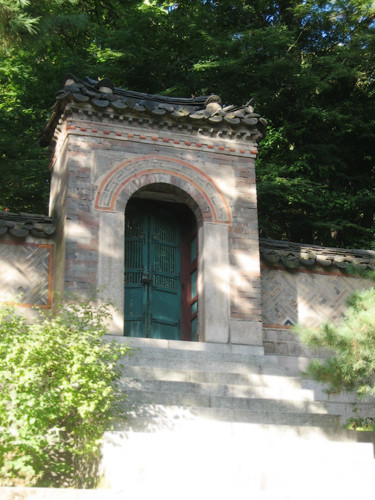
The entrance to the Secret Garden (Huwon), the delightfully named massive park behind the palace complex. I'll admit it, I chose to go to Changdeokgung based solely on the Frances Hodgson Burnett reference.
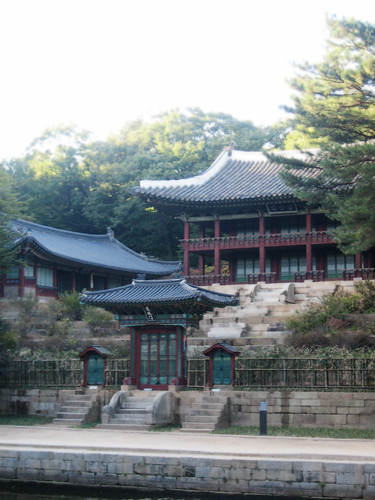
This is Juhamnu, which was the royal archives and library.
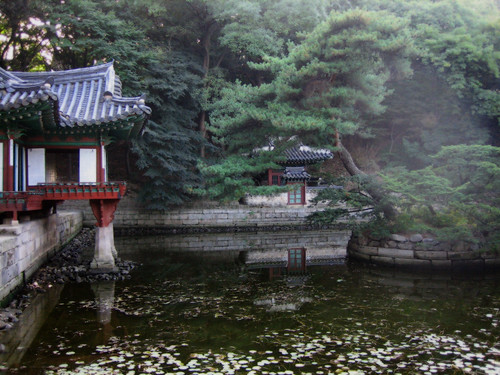
This is Buyongji Poud and Bujongjeong Pavilion. The pond represents the world according to Confucian ideals. The island represents the world, which is round, and the pond represents the sky, which is square.
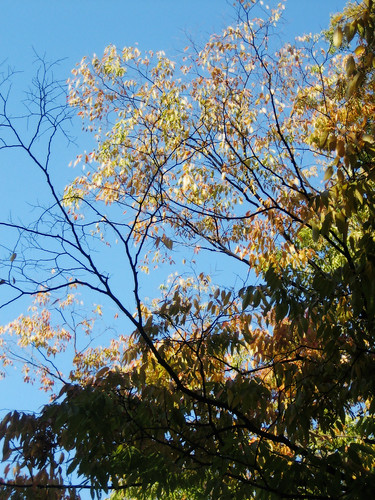
Fall comes to the Secret Garden. The fact that it's this cold in October means I'm going to *freeze* this winter.

Euiduhap, which was a study cubicle for the royal prince. This makes me appreciate my table in an alcove at Davis Library.
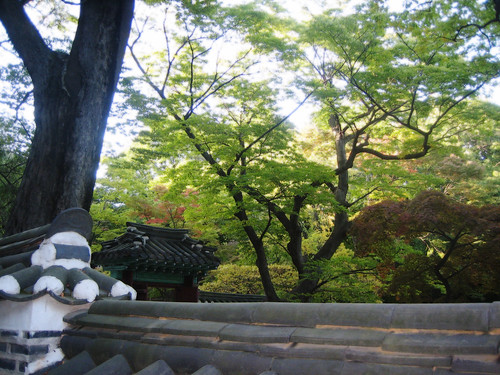
Peering over a wall in the Secret Garden.
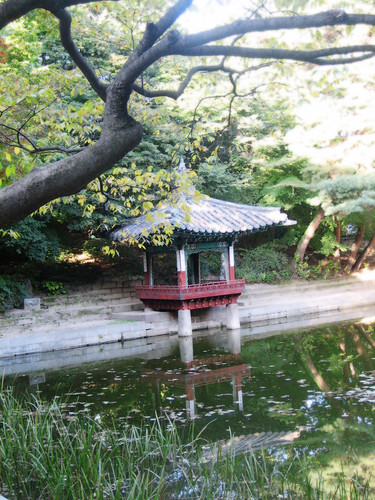
Aeryeonji Pond and Aeryeonjeong Pavilion. This wasn't on the official tour, but I made a slight detour when the guide stopped to talk.
The rest of the photos are here.

No comments:
Post a Comment